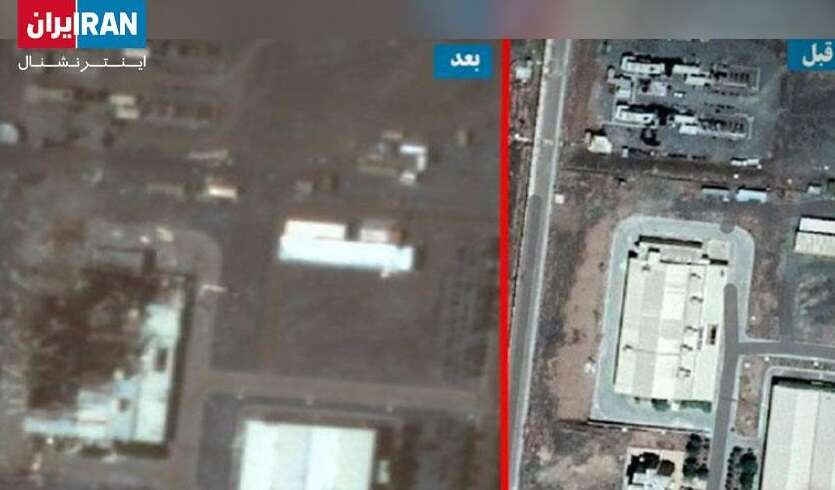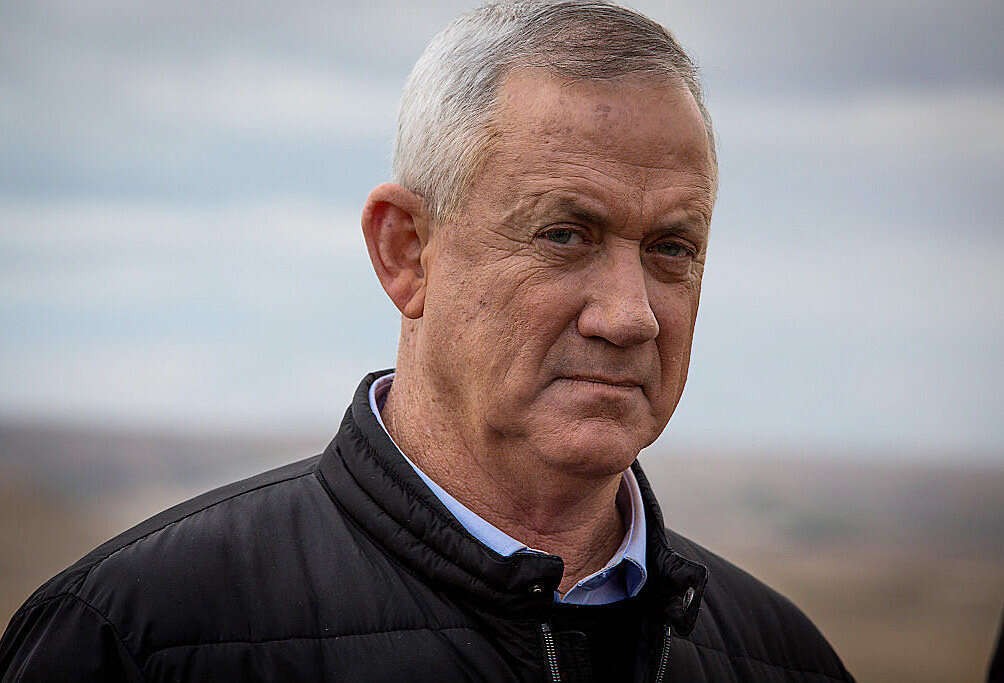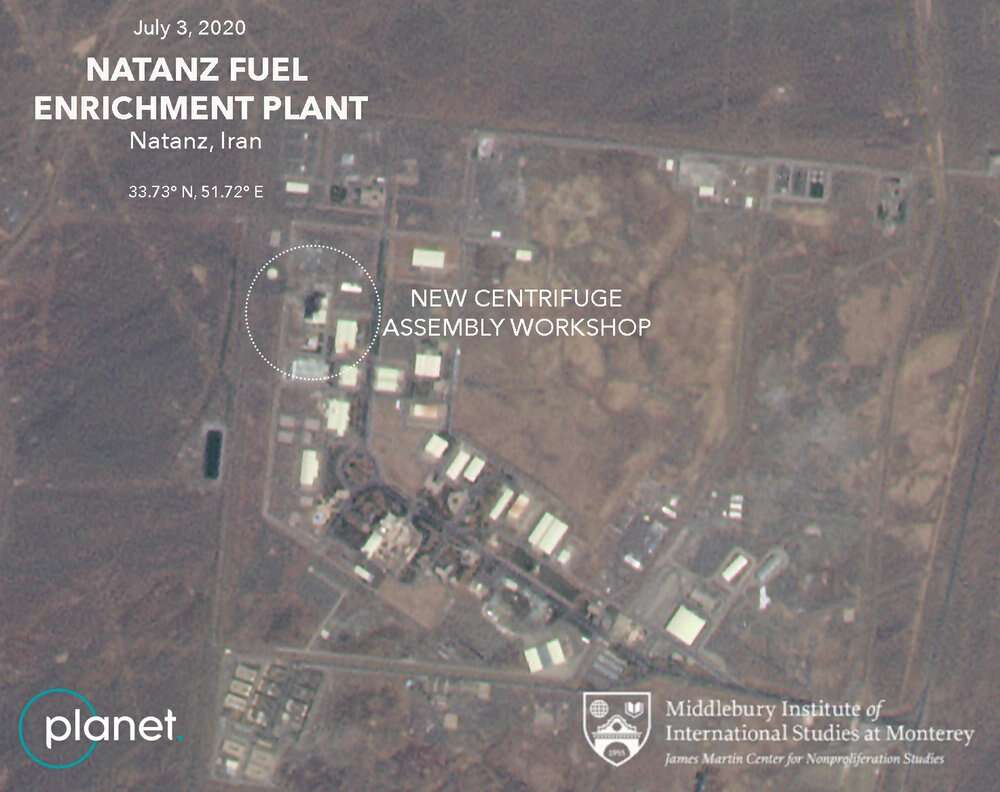Iran on Sunday confirmed that a damaged building at the underground Natanz nuclear site was a new centrifuge assembly center, Iran's state-run IRNA news agency reported.
Iranian officials had previously sought to downplay the fire, which erupted early on Thursday, calling it only an "incident" that affected an "industrial shed." However, a released photo and video of the site broadcasted by Iranian state television showed a two-story brick building with scorch marks and its roof apparently destroyed.
Follow Israel Hayom on Facebook and Twitter

Iran's top security body said on Friday that the cause of the fire that broke out on Thursday had been determined but would be announced later. Some Iranian officials have said it may have been cyber sabotage and one warned that Tehran would retaliate against any country carrying out such attacks.
On Thursday, an article by Iran's state news agency IRNA addressed what it called the possibility of sabotage by enemies such as Israel and the United States, although it stopped short of accusing either directly.
An online video and messages purportedly claiming responsibility for the fire were released Friday. However, the multiple, divergent claims by a self-described group called the "Cheetahs of the Homeland," as well as the fact that Iran experts have never heard of the group before, raised questions about whether Natanz again had faced sabotage by a foreign nation.
Defense Minister Benny Gantz said on Sunday that Israel was not "necessarily" behind every mysterious incident in Iran.
Asked whether Israel had anything to do with the "mysterious explosions," Gantz told Army Radio: "Not every incident that transpires in Iran necessarily has something to do with us."
"All those systems are complex, they have very high safety constraints and I'm not sure they always know how to maintain them," Gantz said.

Three Iranian officials who spoke to Reuters on condition of anonymity on Friday said they believed the fire was the result of a cyberattack but did not cite any evidence.
"The incident could slow down the development and production of advanced centrifuges in the medium term ... Iran will replace the damaged building with a bigger one that has more advanced equipment," state news agency IRNA quoted the spokesman for Iran's Atomic Energy Organization, Behrouz Kamalvandi, as saying.
"The incident has caused significant damage but there were no casualties," said Kamalvandi.
He said that the fire had damaged "precision and measuring instruments," and that the center had not been operating at full capacity due to restrictions imposed by Tehran's 2015 nuclear deal with world powers.
Two US-based analysts who spoke to The Associated Press on Friday, relying on released pictures and satellite images, identified the affected building as Natanz's new Iran Centrifuge Assembly Center. A satellite image on Friday by Planet Labs Inc., annotated by experts at the James Martin Center for Nonproliferation Studies at Middlebury Institute of International Studies, shows what appears to be damage done to half of the building.

Separately on Sunday, the Islamic Revolutionary Guards Corps' navy chief said Tehran had built underground "missile cities" along the Gulf coastline and warned of a "nightmare for Iran's enemies."
Iranian authorities have said such sites exist in all provinces of Iran but have unveiled only three bases so far and not disclosed that they have been built along its coast.
Iran agreed to curb its nuclear program in exchange for the removal of most international sanctions in the deal reached between Tehran and six world powers in 2015.
But Iran has gradually reduced its commitments to the accord since US President Donald Trump's administration withdrew from the deal in 2018, due to Iran's regional belligerence and sponsorship of terrorist groups, and reimposed and intensified sanctions that have battered Iran's economy.
The deal only allows Iran to enrich uranium at its Natanz facility with just over 5,000 first-generation IR-1 centrifuges, but Iran has installed new cascades of advanced centrifuges.
Iran, which says it will not negotiate as long as sanctions remain in place, has repeatedly vowed to continue building up what it calls a defensive missile capability run by the IRGC, in defiance of Western criticism.
Israel has backed Trump's "maximum pressure" policy on Tehran aimed at forcing it to agree a new deal that puts stricter limits on its nuclear work, curbs its ballistic missile program, and ends its regional proxy wars.
In 2010, the Stuxnet computer virus, widely believed to have been developed by the United States and Israel, was discovered after it was used to attack Natanz.
Subscribe to Israel Hayom's daily newsletter and never miss our top stories!




